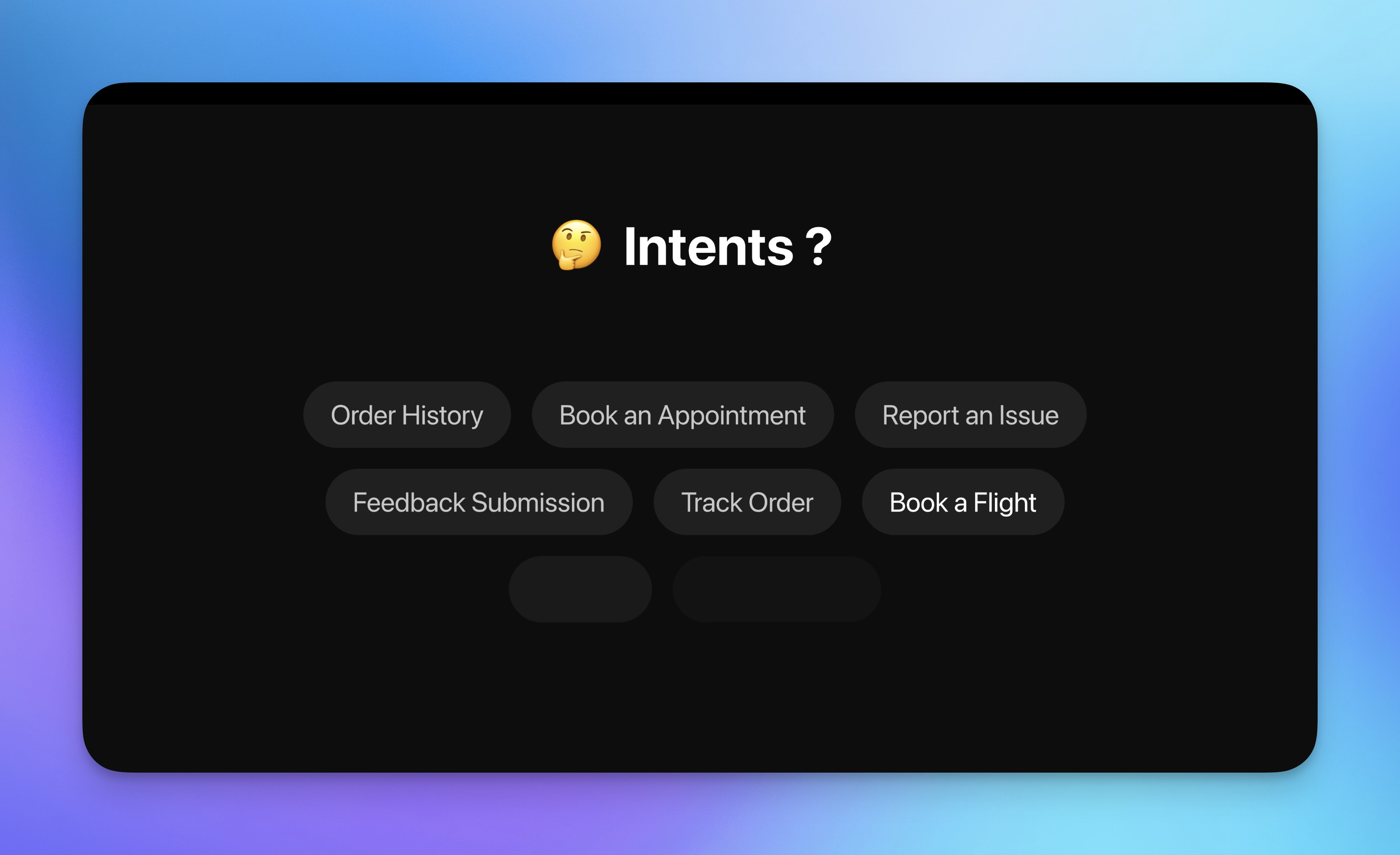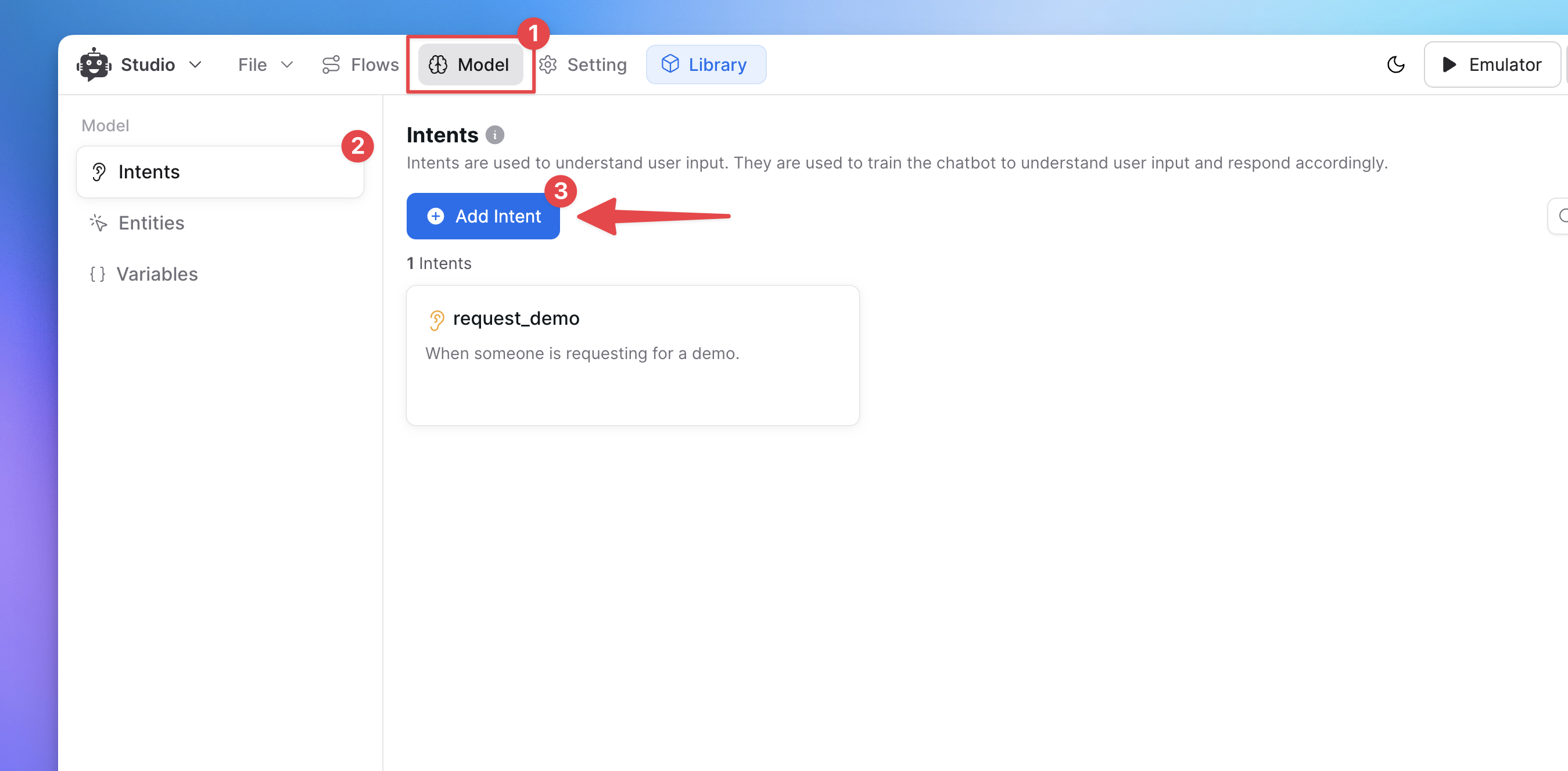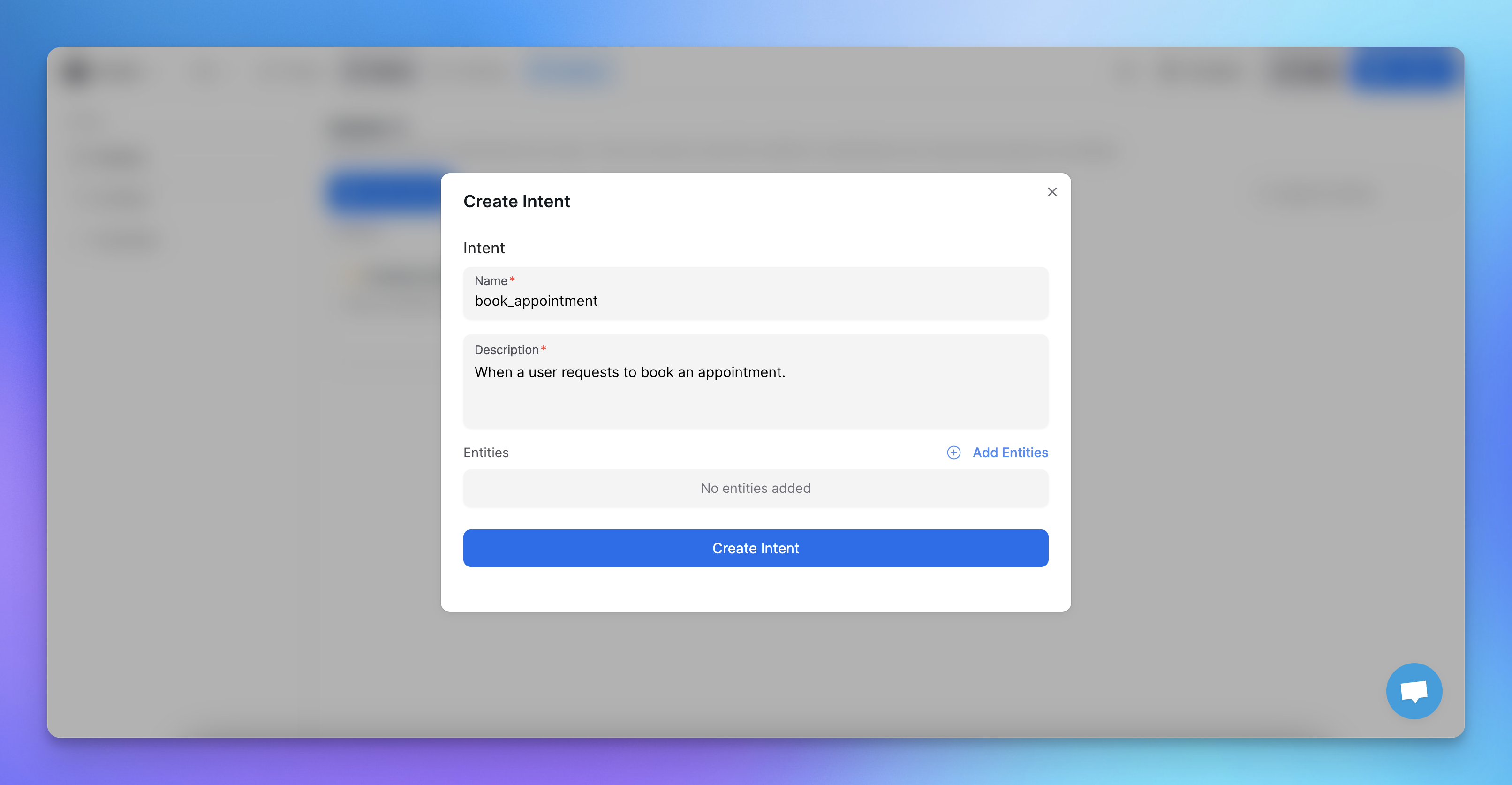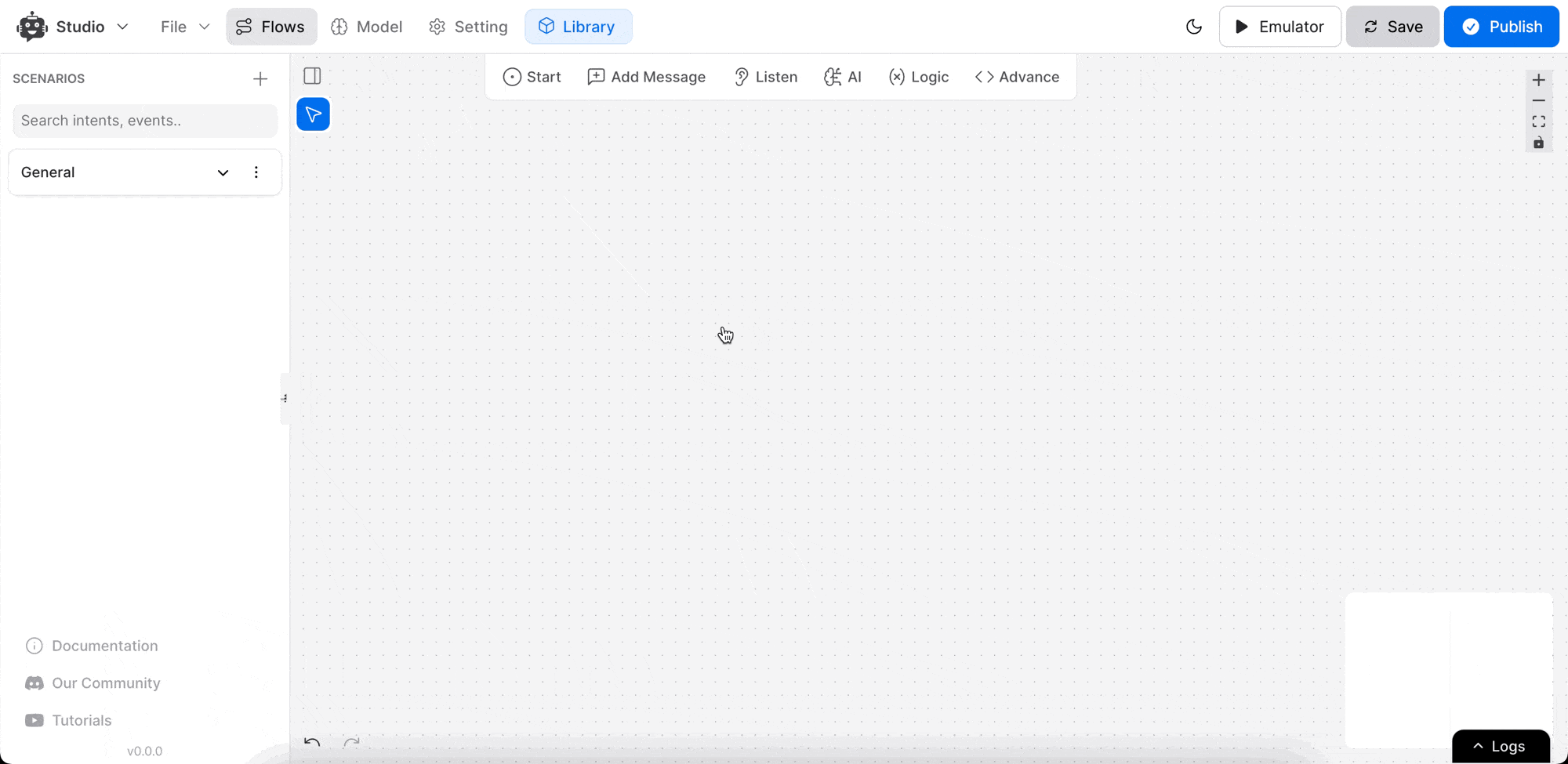How to use Intents in Chatbot Studio?
What are Intents?
Intents help the chatbot understand user intentions and actions. Each intent corresponds to a specific task or response the chatbot can handle. For instance, if a user asks, “What’s the weather like today?” the chatbot recognizes the intent as “asking about the weather” and responds accordingly.

Step-by-Step Process to Create and Use Intents
Step 1: Access the Intents Section

Open the Studio: Launch YourGPT Chatbot Studio.
Navigate to the Model Page: Locate the Intents option in the sidebar and click on it.
Add Intent: Click the Add Intent button.
Step 2: Create a New Intent

Name Your Intent: In the popup, enter a clear, descriptive name for your intent that captures the user’s task or intention.
For example, order_status or book_appointment.
Describe Your Intent: Write a concise description that serves as instructions for the AI. This description should specify when the intent should trigger.
For example, for the book_appointment intent, you could write something like: “When a user wants to book an appointment.”
Step 3: Add Entities (Optional)
You can add relevant entities to your intent, such as email, name, etc. For more information on entities, refer to the Entities Documentation.
Step 5: Create the Intent
Finalize Your Intent: Click Create Intent. Your intent is now ready for use.
Review Existing Intents:
Familiarize yourself with the default intents listed here. Reviewing their names and descriptions will give you a better understanding of how intents function.
Step 6: Use the Intent in a Scenario

Access Scenarios: Go to your scenarios within the Studio.
Drag and Drop the Intent Node: Place the intent node onto the canvas.
Assign the Created Intent: Click on the intent node and select the book_appointment intent you created.
Step 7: Connect Further Nodes
Now that you have an entry point for your intent, you can connect additional nodes to this entry point as needed to create a complete flow.
Step 8: Test Your Intent
Use the emulator to test your intent. Refine its description to ensure it works as intended based on user interactions.

Note: If the intent is not triggering, go to General > Model Settings > Restrictions.
If it's set to "Only answer from knowledge base", intent detection will not work.
To fix this, change it to "Answer from knowledge base & allow function calling" so the AI can detect and respond to intents properly.
Additional Resources:
For more information on structuring effective intents, check out the video guide below or visit the Intents Documentation.
Related Articles
Flow : Scenarios, Blocks, Steps & Connections
This article fully details how steps/nodes and blocks work, how to configure them, create paths and connections.
How to capture and store a user’s response?
This article provides a complete guide on capturing user responses, such as name, email, and more, and shows how to store and utilize them in your chatbot to create personalized and engaging experiences.
How to Add & Configure Text, Image, and File Messages in Studio
Learn how to send text, images, and files with your ai agent using studio.
How to Debug Flows and View Execution Logs in Chatbot Studio?
Learn how to debug your flows, check flow execution logs, and view logs within the Chatbot Studio
How to Set Up Conditions in AI Studio
Set Conditions to Understand What Information Users Are Looking For
How to create and use forms in AI Studio?
This guide will walk you through the process of creating and using forms to improve the user experience with your AI agent
